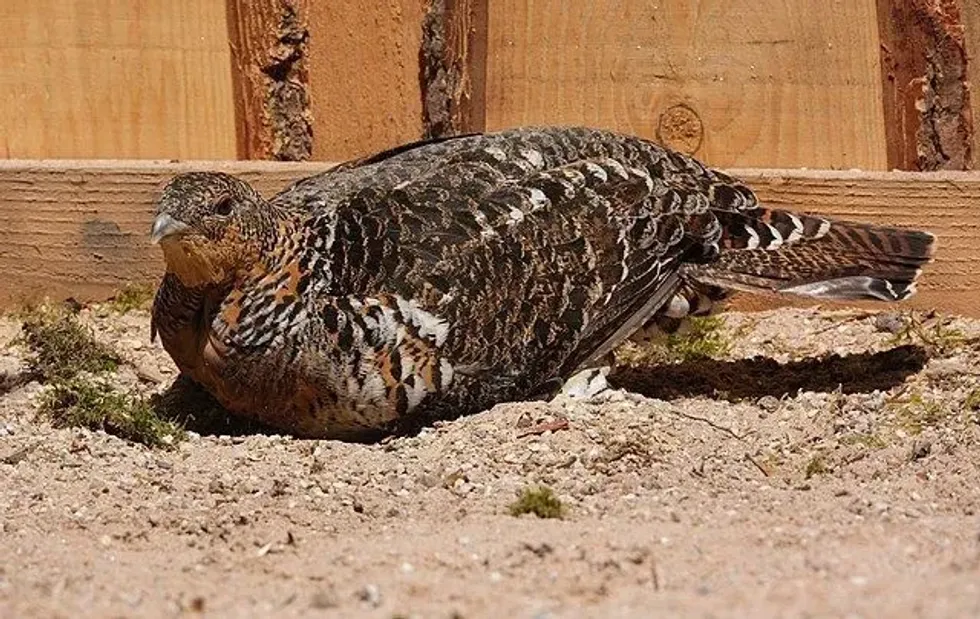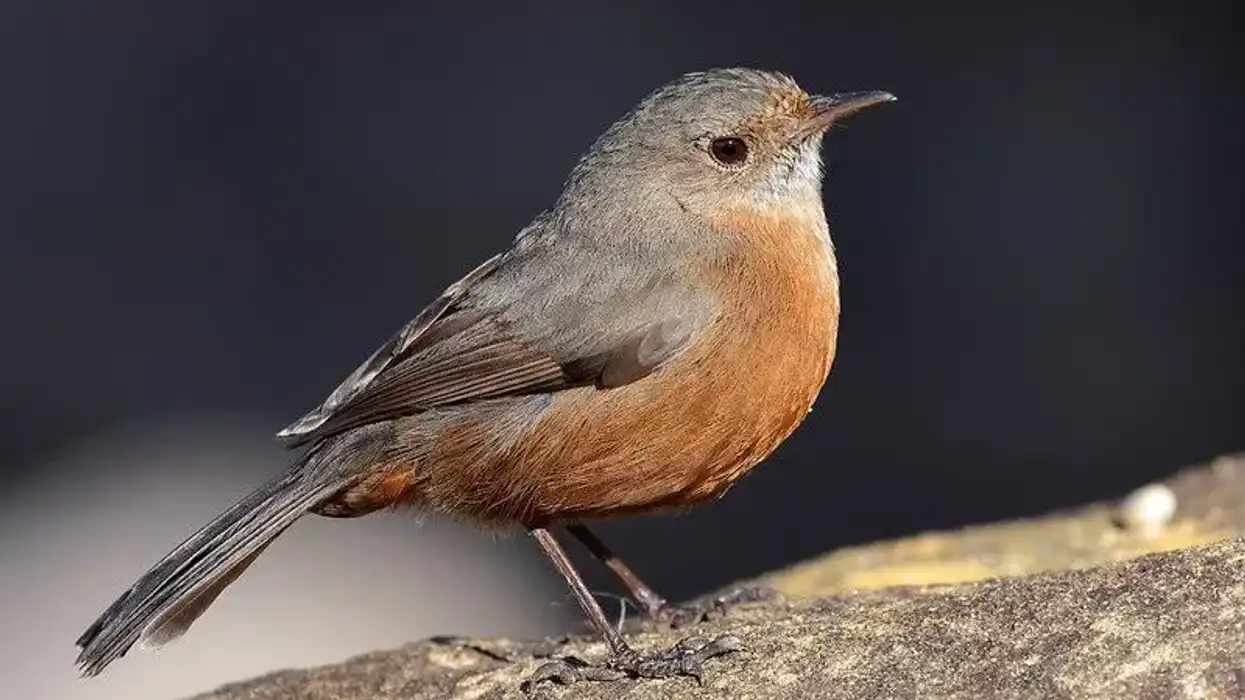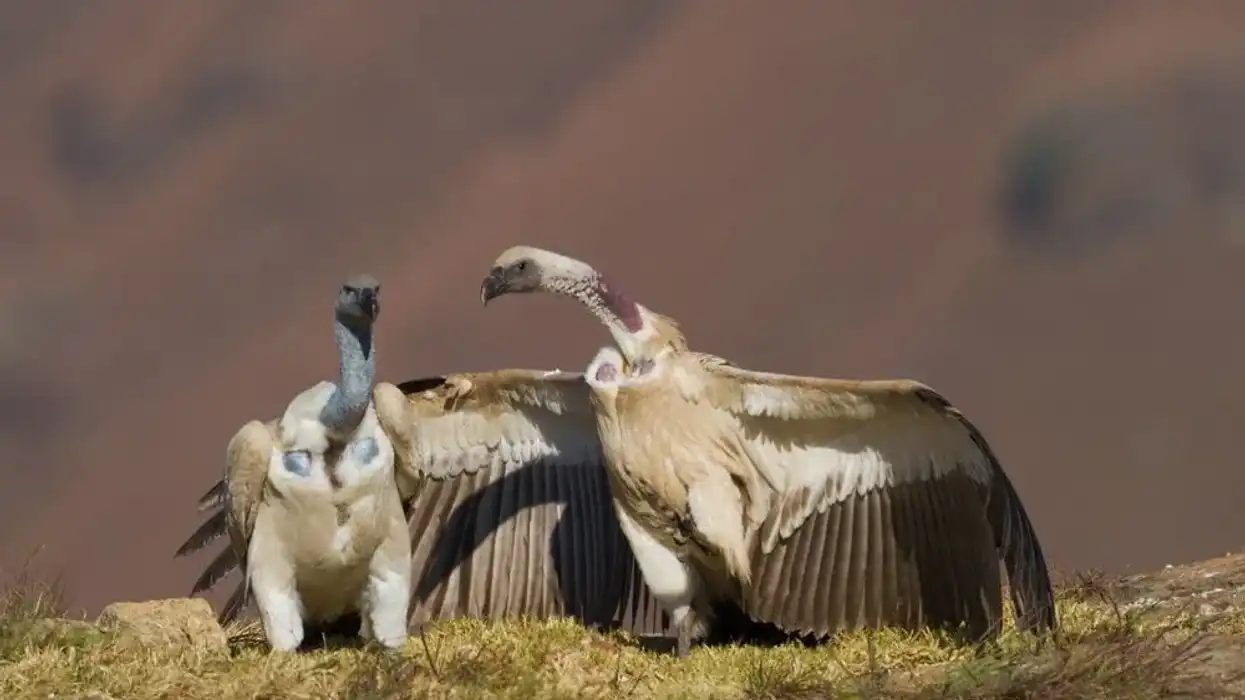Do you like grouse birds, like the blue grouse? Then here we have all the information about the capercaillie or western capercaillie. The capercaillie (Tetrao urogallus) is a species of bird that belongs to the family Phasianidae of birds.
Their geographic range is pretty widespread in Eurasia. Their closest relative is the black-billed capercaillie. According to the International Union for Conservation of Nature Red List, they are listed as a Least Concern species.
The males of this species are more vibrant than the females. The male has black and larger plumage.
The male also has a glossier plumage than the female, with a red streak above its eyes. Both sexes have a white patch on their shoulders. They feed on many plant materials, but their favorite food is pine leaves, stems, and bilberry.
Read on to know more about the capercaillie and if you like this article, then also check out turkey and chicken.
Capercaillie Interesting Facts
What type of animal is a capercaillie?
The capercaillie is a species of grouse bird.
What class of animal does a capercaillie belong to?
The capercaillie bird species belongs to the family Phasianidae and class Aves of animals like blue grouse.
How many capercaillies are there in the world?
The European population of this bird species is estimated somewhere between 1.3-2.1 million mature individual birds. Europe makes up about 40% of its global population, which equates to about 3.3-5.3 million mature birds. In an approximation, the population range of this bird species is 3-5.5 million mature individuals.
Where does a capercaillie live?
The capercaillie range is pretty widespread geographically. They primarily live in the Palearctic zone of the world. The geographic distribution of these birds in the south is in the temperate parts of Europe.
In the east, their range extends to east Siberia, and to the north, they occur until about Scandinavia. Their geographic distribution can be found in fragments in the west. A localized breeding population can be found in Scottish native pinewood.
What is a capercaillie's habitat?
The primary habitats of these birds are the montane and taiga zones. They can be mainly found in medium to old forests, but they can adapt to live in other forests as well. Their habitat is usually abundant in coniferous trees and ericaceous shrub undergrowth with canopy cover at a moderate level.
Who do capercaillies live with?
Capercaillie birds are social in nature. They live in flocks of about 50-100 birds.
How long do capercaillies live?
The average lifespan of these birds is not known. However, a wild bird was seen to live up to three years, and a captive bird was seen to live up to 18 long years.
How do they reproduce?
The breeding season of capercaillie birds occurs around January to late May. They are usually polygynous and show lekking behavior. They use the same lekking habitat for generations.
The top male capercaillie birds are determined by their display during courtship to attract the females and their fighting abilities. The most successful male capercaillie birds have been reported to perform about 90% or more of total copulations in one breeding season.
After copulation, the female capercaillie lays about 5-12 eggs in a span of 10 days. The female capercaillie alone incubates the eggs for the next 25 days. The young chicks fledge when they are about two to three months of age.
What is their conservation status?
The conservation status of these birds, according to the International Union for Conservation of Nature Red List, is listed as Least Concern. They are showing a decreasing population trend and the few main threats they are facing are habitat loss, climate change, predators, hunting, and pollution.
Some conservation efforts, like banning illegal capercaillie hunting and habitat management from compensating for habitat loss, have been taken.
Capercaillie Fun Facts
What do capercaillies look like?
Capercaillie grouse is the largest species of grouse bird. The overall plumage of these birds is dark black with shimmering greenish to bluish patches on the breast.
They also have a conspicuous vivid red streak over their eyes and a beautiful fan-like tail which they spread out during a display to attract females. These birds show strong sexual dimorphism, so the females have different physical attributes and look very similar to black grouses.
They can primarily be differentiated by the rosy-rufous color on their tail, breast, and throat and their overall barred or streaked plumage. Both female and male capercaillie birds have a white patch on their shoulder.
How cute are they?
These birds are very beautiful owing to their colorful plumage. They also don't show any aggressive behavior outside their breeding season.
How do they communicate?
These birds communicate vocally and visually. Specifically, male capercaillie birds display several cues to attract partners during the breeding season. Male capercaillie birds spread their fan-like tails to attract females.
One capercaillie call sounds like 'gulping', and another capercaillie sound is 'clicking'. They also have a song which is called 'canto', which can be heard in four phases. The song starts with double-noted clicks, then the tempo of the song increases and turns into a roll, and it ends with a 'cork note'.
How big are capercaillies?
An adult male capercaillie size is about 31.5-45.3 in (80-115 cm), and a female capercaillie is about 23.2-25.2 in (59-64 cm) in length. They can be around twice the size of sooty grouses that are about 16-20 in (40.6-50.8 cm) in length.
How fast can capercaillies run?
The exact speed at which capercaillies run is not known. However, grouses, in general, have been reported to be able to fly at a speed of 20 mph (32.1 kph).
How much do capercaillies weigh?
These are the largest grouses, so they are heavy in weight. The weight of an adult male capercaillie is about 7.3-9.5 lb (3.3-4.3 kg), and the weight of a female capercaillie is about 3-5.5 lb (1.3-2.5 kg) on average.
What are the male and female names of the species?
A male of this species is called a cock, and a female of this species is called a hen.
What would you call a baby capercaillie?
A baby capercaillie is called a chick or a hatchling.
What do they eat?
These birds are omnivorous in nature. Mainly, only the chicks who are younger than 20 days old have been seen eating small invertebrates, like beetles, ants, or spiders. The older birds solely feed on plant materials like stems, leaves, pines, mosses, and berries of juniper and bilberries, which is a very important part of their diet.
Are they aggressive?
Capercaillies are usually not aggressive or dangerous towards humans or otherwise. However, the male grouses have been seen to show aggressive behavior during courtship behavior when they fight with each other.
Would they make a good pet?
There have been no reports of these birds living as pets. They are wild birds, and it's better to leave them in their natural habitats.
Did you know...
Their nest is mainly made by the female capercaillie. The nest is shallow and usually made at the base of a tree. The nests are lined with twigs, grass, some feathers, and pine needles.
The capercaillie eggs are usually pale yellow in color with red to buff-brown markings.
Capercaillies are not facing global extinction as of now. However, they became extinct in Scotland back in 1785. Even though they became extinct, people fought hard and reintroducing efforts of 1836-37 have brought the Scottish populations of the birds back from extinction.
What does capercaillie mean and how to pronounce it?
The word capercaillie came from the Scottish Gaelic word, 'capall coille'. This Scottish Gaelic word means 'horse of the wood' in English. The phonetic pronunciation of the word is 'cap-er-cail-zie'.
Can you eat capercaillie?
Yes, capercaillies are edible. Many people eat them by roasting them and they taste delicious. You can use some garlic and butter to roast them. A roasted capercaillie breast can serve about four people.
Here at Kidadl, we have carefully created lots of interesting family-friendly animal facts for everyone to discover! For more relatable content, check out these martial eagle facts and Cooper's hawk facts for kids.
You can even occupy yourself at home by coloring in one of our free printable turkey coloring pages.
Main image by Musicaline









